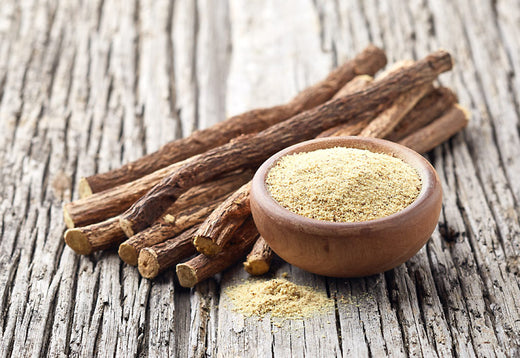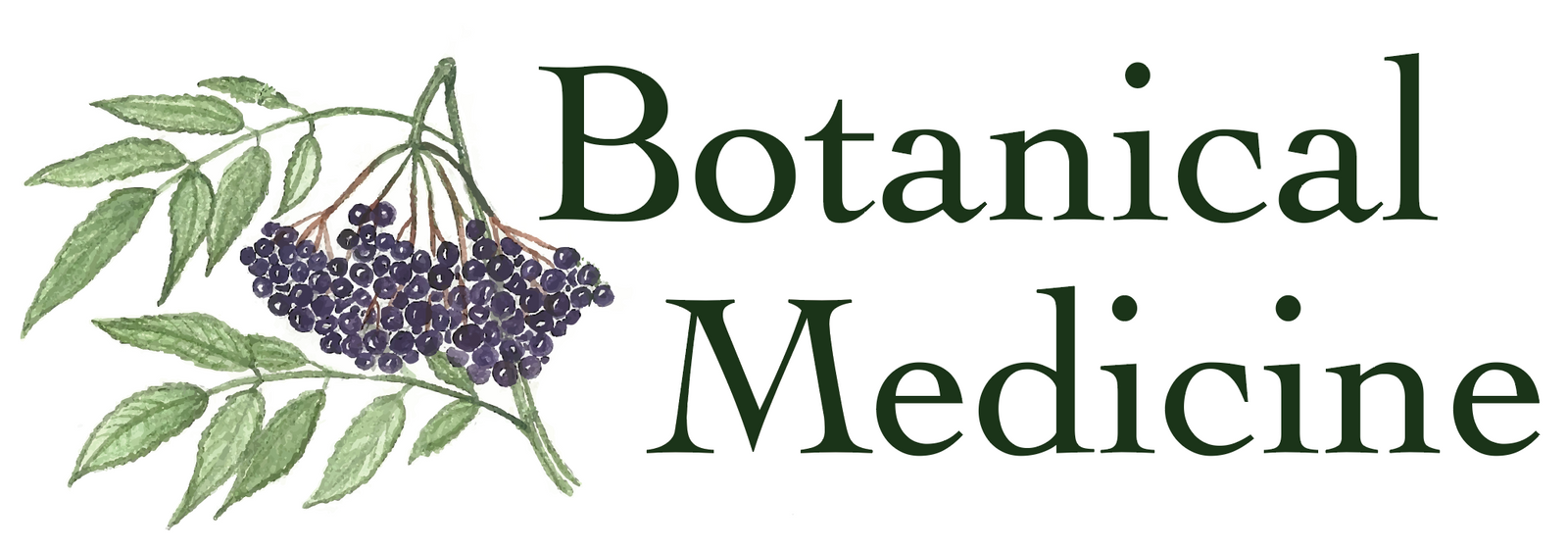
Esophageal reflux, commonly known as gastroesophageal reflux disease (GERD), is a chronic condition where stomach contents flow back into the esophagus, causing symptoms like heartburn, regurgitation and, in severe cases, damage to the esophageal lining. Conventional treatment options, including proton pump inhibitors (PPIs) and H2 receptor antagonists, focus on reducing stomach acid production to alleviate symptoms and prevent complications. However, prolonged use of these medications is associated with potential side effects, such as impaired nutrient absorption, an increased risk of fractures, chronic kidney disease and changes in gut microbiota, prompting many patients to consider alternative management options.
Pathophysiology of GERD
GERD arises from the dysfunction of the lower esophageal sphincter, which typically acts as a barrier to prevent gastric contents from moving back into the esophagus. This backflow irritates the esophageal lining, leading to symptoms such as heartburn, regurgitation and, in chronic cases, esophagitis. Other contributing factors to GERD pathophysiology include impaired esophageal motility, which delays acid clearance and abnormal gastric emptying that increases gastric pressure and reflux potential. Chronic exposure to acid and other irritants can cause mucosal damage, potentially leading to complications such as Barrett’s esophagus and esophageal adenocarcinoma.[1]
Addressing Lifestyle Factors
A holistic approach to GERD begins with addressing foundational health principles.[2] Foods that trigger symptoms and increase relaxation of the lower esophageal sphincter (LES) should be avoided and fiber-rich foods should be included to help promote a healthy microbiome.[3] Sedentary behavior, smoking, and certain medications that exacerbate GERD symptoms should also be addressed. Excess intra-abdominal pressure from overeating or truncal obesity can worsen reflux, making smaller meals and weight management strategies essential. Additionally, factors that delay gastric emptying, like certain medications or chronic stress, should be managed. Stress reduction techniques, such as deep breathing, meditation and relaxation exercises, can support nervous system health and improve overall digestive function, reducing the likelihood of reflux.[4,5]
Herbs for Esophageal Reflux Management
Herbal medicine can target key pathophysiological aspects of GERD, including esophageal mucosal protection, inflammation, impaired gastric motility and stress-induced exacerbation of symptoms. Specific herbs like licorice, slippery elm and marshmallow root enhance mucosal defense by stimulating mucus production.[6] Meanwhile, anti-inflammatory herbs such as chamomile help reduce esophageal irritation and support tissue repair.[6] Additionally, certain herbs can improve gastric motility and alleviate stress, addressing multiple factors that contribute to GERD pathogenesis.
Glycyrrhiza glabra (Licorice)

Licorice root has been traditionally used in treating digestive disorders due to its anti-inflammatory, soothing and mucoprotective properties.[7] A specific form of licorice known as deglycyrrhizinated licorice (DGL) is commonly used in the management of GERD due to its ability to promote mucosal healing without causing the side effects associated with the constituent glycyrrhizin, which include hypertension and fluid retention.[8] The mucoprotective effects of licorice are due to the promotion of mucus production in the stomach and esophagus, which can act as a protective barrier against acid.[9] Moreover, licorice’s anti-inflammatory properties are instrumental in reducing the esophageal irritation caused by reflux. A noteworthy randomized, double-blind, placebo-controlled trial evaluated the effectiveness of a licorice extract (GutGard) in individuals with functional dyspepsia, a condition with symptoms that overlap with GERD, such as heartburn and regurgitation. In the trial, 25 patients were administered 75 mg of GutGard twice daily over 30 days. Results showed significant total symptom reduction compared to the placebo group (P ≤ .05), including improvements in symptom scores for heartburn, regurgitation and upper abdominal pain.[10] Caution: intake of licorice can lead to increased blood pressure (based on effects to increase sodium and decrease potassium) and should not be consumed by patients with hypertension!
Althaea officinalis (Marshmallow Root)

Althaea officinalis, commonly known as marshmallow root, has a long-standing history in herbal medicine for its ability to soothe and protect irritated mucosal tissues, especially within the gastrointestinal tract. Marshmallow root contains high levels of mucilage, a gelatinous substance that forms a protective coating, shielding the esophageal mucosa from the erosive effects of stomach acid.[11] This protective layer allows inflamed tissues to heal and prevents further damage from acid exposure, which is especially valuable for individuals experiencing chronic irritation due to acid reflux. Additionally, marshmallow root possesses mild anti-inflammatory properties, contributing to the reduction of esophageal inflammation and helping to support tissue repair and recovery.[12] Traditionally, herbalists have recommended marshmallow root to relieve hot or inflamed digestive conditions, such as gastritis, esophagitis and dyspepsia, which are often present in GERD. In particular, the herb has been used for its ability to alleviate symptoms of burning and irritation in the digestive tract while promoting a cooling and calming effect.[13] However, due to its mucilaginous nature, marshmallow root can delay the absorption of other medications by forming a barrier in the stomach and intestines. It is generally recommended to take marshmallow at least one hour away from other oral medications and supplements to avoid any potential interactions.
Aloe Vera (Aloe)

Similar to marshmallow root, Aloe vera is rich in polysaccharides that form a protective barrier on mucosal surfaces, reducing irritation from stomach acid on the esophageal lining. The high polysaccharide content, particularly acemannan, contributes to its soothing properties by inhibiting pro-inflammatory pathways and supporting tissue repair in the digestive tract.[14] An open-label, randomized controlled trial conducted in 2015 demonstrated the effectiveness of Aloe vera syrup in reducing GERD symptoms in comparison to standard pharmaceutical treatments. In this study, participants (n = 79) took either Aloe vera syrup (10 mL once daily, standardized to 5.0 mg of polysaccharides per mL), ranitidine (150 mg twice daily) or omeprazole (20 mg once daily). Results showed that Aloe vera was slightly less effective in symptom relief compared to ranitidine and omeprazole, however it was well-tolerated and does not carry the safety issues related to the conventional medications for treatment of GERD.[15] Latex-free aloe products are recommended for GERD management to avoid the potent laxative effects of anthraquinones, a constituent of aloe that is concentrated in the latex of the outer layer of the leaf.
Ulmus rubra (Slippery Elm)
Slippery elm is another mucilaginous herb that has long been used to soothe the gastrointestinal tract. Like marshmallow, it produces a gel-like substance that coats and protects the mucous membranes of the esophagus and stomach. However, slippery elm tree is prone to Dutch elm disease and overharvesting, making Althaea officinalis or Aloe vera more sustainable alternatives. [16]
Matricaria recutita (Chamomile)

Chamomile offers several therapeutic benefits for managing GERD symptoms, including anti-inflammatory, antispasmodic and anxiolytic properties. Its anti-inflammatory effects are largely due to compounds like chamazulene and bisabolol, which help soothe the inflamed esophageal and gastric lining, reducing irritation associated with acid reflux and heartburn. Studies confirm chamomile’s ability to inhibit pro-inflammatory pathways, highlighting its potential as a natural anti-inflammatory agent for conditions involving mucosal inflammation.[17] Chamomile’s antispasmodic benefits are due to the presence of flavonoids such as apigenin. These flavonoids relax smooth muscle contractions in the gastrointestinal tract, easing symptoms such as bloating and cramping that can increase risk of GERD by increasing abdominal pressure.[18] Other common carminative herbs, such as fennel (Foeniculum vulgare) and mint (Mentha spp.), also ease bloating; however, mint should be avoided in cases of GERD as it is known to relax the LES , potentially aggravating symptoms.[19,20] Additionally, chamomile’s anxiolytic effect,—primarily through interactions with GABA receptors,—can be beneficial in GERD management, as anxiety often exacerbates acid secretion and disrupts digestion.[21] Taken as a tea, chamomile is a widely accessible option for those experiencing GERD symptoms, especially when they coincide with stress or anxiety.
Zingiber officinale (Ginger)

Known for its ability to stimulate the digestive system, ginger is helpful in promoting digestive motility, potentially reducing factors putting patients at risk for developing GERD. A study published in the World Journal of Gastroenterology found that ginger stimulates gastric motility, promoting more rapid gastric emptying reducing the likelihood of food and acid being refluxed into the esophagus.[22] By accelerating the digestive process, ginger can help prevent the buildup of gastric contents, a factor that often triggers reflux. Enhanced motility also means that ginger may alleviate GERD-related bloating and discomfort, which are often aggravated by delayed stomach emptying. Additionally, ginger’s anti-inflammatory and antioxidant compounds, such as gingerols and shogaols, help to soothe the gastrointestinal tract, protect mucosal integrity and mitigate the chronic irritation that often accompanies GERD.[23] Notably, ginger’s gastroprotective qualities extend to reducing inflammation in the esophagus, which can be particularly useful in preventing the damage associated with repeated acid exposure.
Conclusion
Herbal medicine represents a promising approach to managing esophageal reflux. Herbs such as licorice, chamomile, ginger and marshmallow root have been shown to provide symptomatic relief by addressing key aspects of GERD pathophysiology, including mucosal protection, anti-inflammatory effects and improved digestive function. Current evidence and traditional use support these herbs as viable options for patients seeking symptom relief without the potential long-term side effects of conventional GERD medications. Considering GERD’s multifactorial nature, a holistic approach involving lifestyle adjustments, dietary changes and herbal therapies offers a sustainable and effective pathway to long-term symptom management and improved quality of life.
Meet Our Contributor:

Meghan Zech is a Naturopathic Doctor based in Seattle, WA. She is board certified in Naturopathic Oncology and is a AHG Registered Herbalist. Her clinical practice emphasizes botanical medicine and nutrition, with a particular focus on integrative oncology, chronic health conditions and digestive concerns. She is particularly passionate about working with patients in the cancer survivorship setting as this growing population faces unique medical needs, which are often poorly understood in the primary care setting. She can be found at www.sanapacifica.com
REFERENCES
1. Antunes C, Aleem A, Curtis SA. Gastroesophageal Reflux Disease. [Updated 2023 Jul 3]. In: StatPearls [Internet]. Treasure Island (FL): StatPearls Publishing; 2024 Jan.
2. Jiang D, Zhuang Q, Jia X, Chen S, Tan N, Zhang M, Xiao Y. Current complementary and alternative therapy forgastroesophageal reflux disease. Gastroenterol Rep (Oxf). 2023 Oct 4;11:goad057. doi: 10.1093/ gastro/goad057. PMID: 37810946; PMCID: PMC10551227.
3. Morozov S., Isakov V., Konovalova M. Fiber-enriched diet helps to control symptoms and improves esophageal motility in patients with non-erosive gastroesophageal reflux disease. World J. Gastroenterol. 2018;24:2291–2299. doi: 10.3748/wjg.v24.i21.2291
4. McDonald-Haile J, Bradley LA, Bailey MA, Schan CA, Richter JE. Relaxation training reduces symptom reports and acid exposure in patients with gastroesophageal reflux disease. Gastroenterology. 1994 Jul;107(1):61-9. doi: 10.1016/0016-5085(94)90061-2. PMID: 8020690.
5. Zdrhova L, Bitnar P, Balihar K, Kolar P, Madle K, Martinek M, Pandolfino JE, Martinek J. Breathing Exercises in Gastroesophageal Reflux Disease: A Systematic Review. Dysphagia. 2023 Apr;38(2):609-621. doi: 10.1007/ s00455-022-10494-6. Epub 2022 Jul 16. PMID: 35842548; PMCID: PMC9888515.
6. Herdiana Y. Functional Food in Relation to Gastroesophageal Reflux Disease (GERD). Nutrients. 2023 Aug 15;15(16):3583. doi: 10.3390/nu15163583. PMID: 37630773; PMCID: PMC10458865.
7. Yang R, Yuan BC, Ma YS, Zhou S, Liu Y. The anti-inflammatory activity of licorice, a widely used Chinese herb. Pharm Biol. 2017 Dec;55(1):5-18. doi: 10.1080/13880209.2016.1225775. Epub 2016 Sep 21. PMID: 27650551; PMCID: PMC7012004.
8. Murray MT. Glycyrrhiza glabra (Licorice). Textbook of Natural Medicine. 2020:641–647.e3. doi: 10.1016/B978-0-323-43044-9.00085-6. Epub 2020 Jul 10. PMCID: PMC7348626.
9. Wu Y, Guo Y, Huang T, Huang D, Liu L, Shen C, Jiang C, Wang Z, Chen H, Liang P, Hu Y, Zheng Z, Liang T, Zhai D, Zhu H, Liu Q. Licorice flavonoid alleviates gastric ulcers by producing changes in gut microbiota and promoting mucus cell regeneration. Biomed Pharmacother. 2023 Dec 31;169:115868. doi: 10.1016/j.biopha.2023.115868. Epub 2023 Nov 10. PMID: 37952360.
10. Raveendra KR, Jayachandra, Srinivasa V, Sushma KR, Allan JJ, Goudar KS, Shivaprasad HN, Venkateshwarlu K, Geetharani P, Sushma G, Agarwal A. An Extract of Glycyrrhiza glabra (GutGard) Alleviates Symptoms of Functional Dyspepsia: A Randomized, Double-Blind, Placebo-Controlled Study. Evid Based Complement Alternat Med. 2012;2012:216970. doi: 10.1155/2012/216970. Epub 2011 Jun 16. PMID: 21747893; PMCID: PMC3123991.
11. Blumenthal, M., Goldberg, A., & Brinckmann, J. (Eds.). (2000). Herbal Vade Mecum. MedPharm.
12. Bone, K., & Mills, S. (2013). Principles and Practice of Phytotherapy: Modern Herbal Medicine. Churchill Livingstone.
13. Wood, M. (2008). The Earthwise Herbal, Volume I: A Complete Guide to Old World Medicinal Plants. North Atlantic Books.
14. Sánchez M, González-Burgos E, Iglesias I, Gómez-Serranillos MP. Pharmacological Update Properties of Aloe Vera and its Major Active Constituents. Molecules. 2020 Mar 13;25(6):1324. doi: 10.3390/ molecules25061324. PMID: 32183224; PMCID: PMC7144722.
15. Panahi Y, Khedmat H, Valizadegan G, Mohtashami R, Sahebkar A. Efficacy and safety of Aloe vera syrup for the treatment of gastroesophageal reflux disease: a pilot randomized positive-controlled trial. J Tradit Chin Med. 2015 Dec;35(6):632-6. doi: 10.1016/s0254-6272(15)30151-5. PMID: 26742306.
16. https://unitedplantsavers.org/species-at-risk-list/slippery-elm-ulmus-rubra/
17. McKay DL, Blumberg JB. A review of the bioactivity and potential health benefits of chamomile tea (Matricaria recutita L.). Phytother Res. 2006 Jul;20(7):519-30. doi: 10.1002/ptr.1900. PMID: 16628544.
18. Srivastava JK, Shankar E, Gupta S. Chamomile: A herbal medicine of the past with bright future. Mol Med Rep. 2010 Nov 1;3(6):895-901. doi: 10.3892/ mmr.2010.377. PMID: 21132119; PMCID: PMC2995283.
19. Jarosz M, Taraszewska A. Risk factors for gastroesophageal reflux disease: the role of diet. Prz Gastroenterol. 2014;9(5):297-301. doi: 10.5114/ pg.2014.46166. Epub 2014 Oct 19. PMID: 25396005; PMCID: PMC4223119.
20.Scarpellini E, Broeders B, Schol J, Santori P, Addarii M, Boccuto L, Carbone F, Abenavoli L, Tack J. The Use of Peppermint Oil in Gastroenterology. Curr Pharm Des. 2023;29(8):576-583. doi: 10.2174/1381612829666230328163449. PMID: 36994979.
21. Amsterdam JD, Li Y, Soeller I, Rockwell K, Mao JJ, Shults J. A randomized, double-blind, placebo-controlled trial of oral Matricaria recutita (chamomile) extract therapy for generalized anxiety disorder. J Clin Psychopharmacol. 2009 Aug;29(4):378-82. doi: 10.1097/ JCP.0b013e3181ac935c. PMID: 19593179; PMCID: PMC3600416.
22. Hu ML, Rayner CK, Wu KL, Chuah SK, Tai WC, Chou YP, Chiu YC, Chiu KW, Hu TH. Effect of ginger on gastric motility and symptoms of functional dyspepsia. World J Gastroenterol. 2011 Jan 7;17(1):105-10. doi: 10.3748/ wjg.v17.i1.105. PMID: 21218090; PMCID: PMC3016669.




